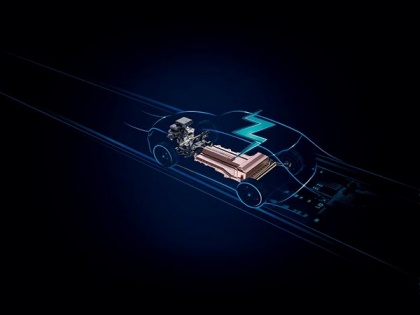High-flying battery makers have much to win and lose: S&P
By ANI | Published: June 21, 2021 11:01 AM2021-06-21T11:01:36+5:302021-06-21T11:10:02+5:30
S&P Global Ratings said on Monday the world's biggest battery producers globally face substantial upside and downside risks to ratings.

High-flying battery makers have much to win and lose: S&P
S&P Global Ratings said on Monday the world's biggest battery producers globally face substantial upside and downside risks to ratings.
While their growth opportunities are significant, they will need to navigate fast-moving technology, heavy expenditure, geopolitical forces shaping trade lines and environmental strains, it said.
The demand for batteries that power light electric vehicles (including battery electric vehicles and plug-in hybrids) may grow as much as eight-fold by 2025 from 139 gigawatt hours in 2020.
Many countries are encouraging battery production to foster their own domestic electric vehicle industry.
"The battery sector has entered an extremely dynamic phase. Firms face substantial growth opportunities as electric vehicles rapidly replace legacy autos," said S&P Global Ratings credit analyst Stephen Chan.
"This will require heavy upfront investment in a battery standard that may be quickly eclipsed by superior technology. There are many moving pieces that may contribute to sharp ratings moves, up or down."
Although Europe and the United States are aggressively building battery capacity, supply will likely undershoot demand. Regulatory inducements and government subsidies made Europe the fastest-growing electric vehicle market in 2020.
In the United States, the Biden administration has proposed tax incentives and new infrastructure (such as charging stations) that may increase the ratio of EVs to new auto sales to about 10 per cent, by 2025.
"The battery supply chains in the US and Europe are underdeveloped, and will need years to catch up to players such as China," said Chan.
Global carmakers are also leveraging on their partnerships with Korean and Japanese battery suppliers which have larger capacity available in Europe and the United States to secure battery supply in their home countries.
S&P anticipates the cost of lithium battery packs could fall to 100 dollars per kilowatt hour as early as 2024. Those in the industry often say the level is an inflection point for mass adoption of EVs.
It will make electric vehicles about as cheap as equivalent combustion-engine vehicles. As demand rises, economies of scale kick in.
S&P anticipates that a virtuous cycle of rising sales, lower costs and increased efficiency will lift carmakers and their suppliers.
Battery players continue to experiment with materials and battery types. S&P said the competitive order of this sector will be dynamic for the next five to 10 years as entities perfect the technology and converge on a standard.
As the EV market continues to boom, entities will need to manage substantial environmental, social and governance risk.
"This will soon become a critical environmental issue, given the toxicity of materials and the soon-to-be massive scale of the industry. Large firms and battery suppliers will face growing pressure to shoulder this environmental responsibility," said S&P Global Ratings credit analyst Minjib Kim.
( With inputs from ANI )
Disclaimer: This post has been auto-published from an agency feed without any modifications to the text and has not been reviewed by an editor
Open in app